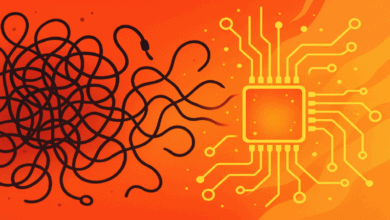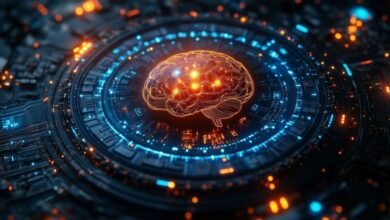Scientists Convert Brain Signals to Speech in Real Time

▼ Summary
– A new brain-computer interface (BCI) can synthesize speech in real time for a man who lost his voice due to ALS, using neural signals to restore communication.
– The BCI records neural activity from brain regions controlling speech muscles, producing voice only when the user voluntarily attempts to speak, not reading inner thoughts.
– The system includes AI models trained on the patient’s neural data and pre-ALS voice recordings, allowing synthesized speech with emotional and intonational nuances.
– While the BCI improved intelligibility from 3% to 56%, researchers emphasize it’s a proof of concept, not yet ready for everyday use, and requires further accuracy improvements.
– Future goals include expanding the technology for fully locked-in patients and exploring applications for language disorders like aphasia, beyond muscle paralysis cases.
Scientists have achieved a breakthrough in converting brain signals into speech almost instantly using advanced neural technology. A recent study demonstrates how a brain-computer interface (BCI) successfully synthesized the voice of a man who lost his ability to speak due to ALS, marking a significant step toward restoring natural communication for paralyzed individuals. While still in early stages, the technology opens new possibilities for those with severe speech impairments.
The system works by decoding neural activity from brain regions responsible for speech production, then translating those signals into synthesized speech in real time. Unlike text-based communication tools, this approach preserves vocal nuances like tone and emphasis, critical elements for conveying meaning. Researchers implanted microelectrode arrays in key brain areas, allowing the device to capture the patient’s attempted speech and convert it into audible words with minimal delay.
One of the most striking aspects of the study was the use of AI to recreate the patient’s original voice from pre-ALS recordings. Hearing his own synthesized voice had a profound emotional impact, reinforcing the importance of personalized speech restoration. The system also adapted to vocal variations, enabling the patient to ask questions, emphasize words, and even hum melodies, demonstrating flexibility beyond basic word generation.
Despite these advances, challenges remain. Listeners correctly identified the synthesized speech only 56% of the time, a significant improvement over the patient’s unaided attempts but still far from perfect. Researchers emphasize that this is a proof of concept, not a finished product. Future refinements could involve higher-density electrode arrays and more sophisticated AI models to enhance clarity and reliability.
The team also aims to explore broader applications, including potential use for individuals with aphasia or congenital speech disorders. While current BCIs focus on patients with intact language cognition, future iterations might address neurological damage affecting speech production. Collaboration with industry partners could accelerate clinical trials, bringing this technology closer to real-world implementation.
For now, the study represents a hopeful milestone. As one researcher noted, restoring even partial speech can dramatically improve quality of life for those who have lost their voice. The road ahead is long, but the foundation for meaningful progress has been laid.
(Source: Spectrum)





